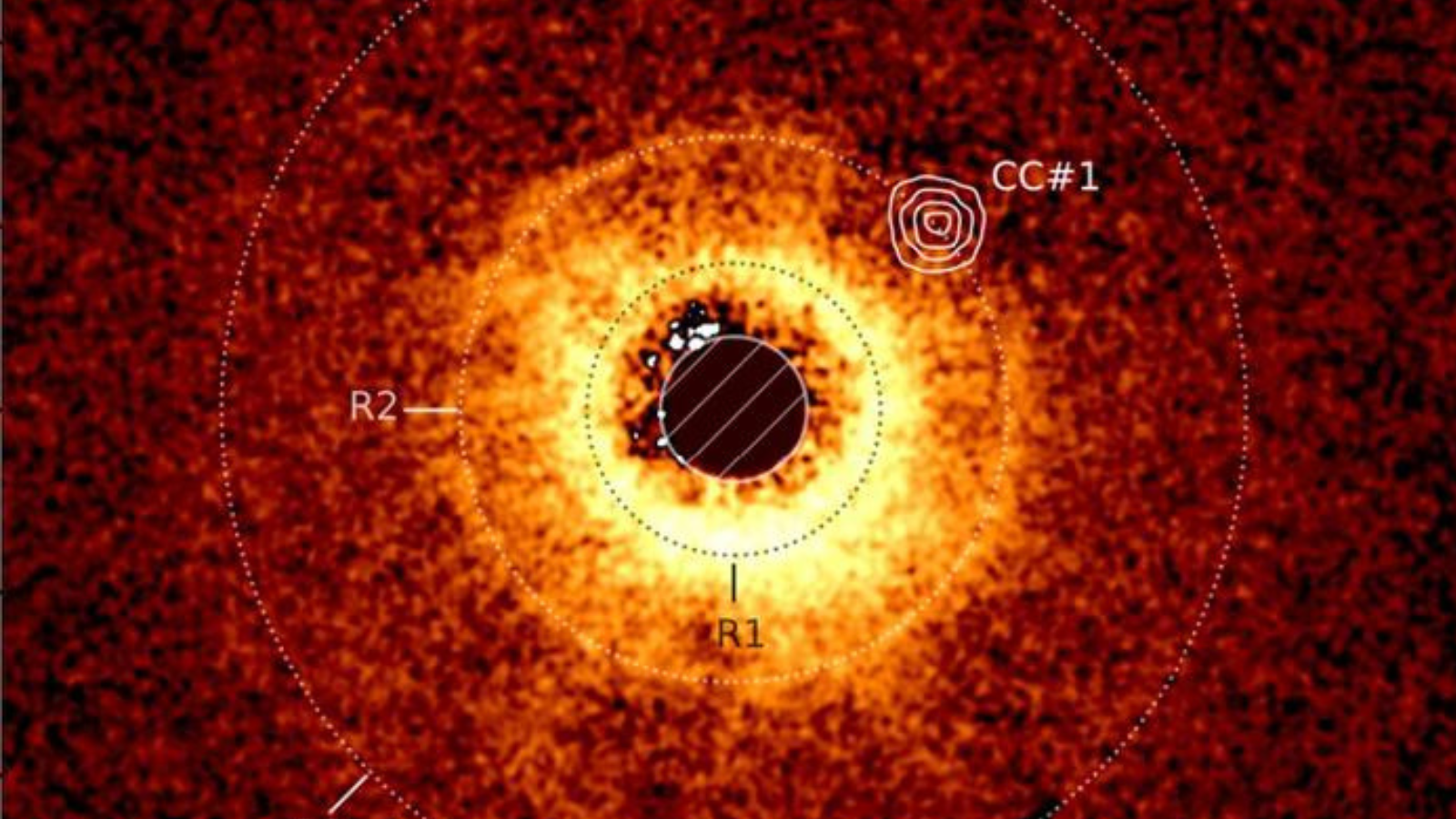
The James Webb Space Telescope has discovered its 1st exoplanet and snapped its picture (image)
How did your country report this? Share your view in the comments.
Diverging Reports Breakdown
The James Webb Space Telescope has discovered its 1st exoplanet and snapped its picture (image)
The James Webb Space Telescope (JWST) has discovered its first new planet. The extrasolar planet, or “exoplanet,” has been designated TWA 7b. With an estimated mass of around 100 times that of Earth or 0.3 times the mass of Jupiter, it is ten times lighter than any exoplanet previously directly imaged. The planet was discovered in the debris rings that surround the low-mass star CE Antilae, located around 111 light-years from Earth. It’s a safe bet that the powerful space telescope will discover many more planets as it images even lighter worlds. The JWST is equipped with a coronagraph that blocks out the light from central stars, allowing the faint infrared emissions of orbiting exoplanets to be detected by its Mid-Infrared Instrument.
Image of the disk around the star TWA 7 recorded using ESO’s Very Large Telescope’s SPHERE instrument. The image captured with JWST’s MIRI instrument is overlayed. We can clearly see the empty area around TWA 7 B in the R2 ring (CC #1).
After three years of helping astronomers investigate known planets beyond the solar system, the James Webb Space Telescope (JWST) has discovered its first new planet.
The extrasolar planet, or “exoplanet,” which has been designated TWA 7b, also happens to have the lowest mass of any planet that has been directly imaged beyond the solar system. With an estimated mass of around 100 times that of Earth or 0.3 times the mass of Jupiter, TWA 7b is ten times lighter than any exoplanet previously directly imaged.
TWA 7b was discovered in the debris rings that surround the low-mass star CE Antilae, also known as TWA 7, located around 111 light-years from Earth. CE Antilae is a very young star, estimated to be around just a few million years old. If that seems ancient, consider the sun, a “middle-aged” star, is around 4.6 billion years old.
CE Antilae, discovered in 1999, has long been a system of great interest to astronomers because it is seen “pole-on” from Earth. That means the disk of debris or “protoplanetary disk” that surrounds CE Antliae is seen ‘from above’ (or ‘below’), revealing its full extent.
This has allowed astronomers to see structures in this disk that appear to have been created by the gravity of then-unseen planets and planetesimals, the “seeds” which gather mass to grow into full planets.
Full sized image of the JWST’s observations of the star CE Antliae and its exoplanet TWA 7b. (Image credit: A.-M. Lagrange and al. – Evidence for a sub-jovian planet in the young TWA7 disk, 2025)
The disk of CE Antilae is divided into three distinct rings, one of which is narrow and bounded by two empty “lanes” mostly devoid of matter.
When imaging this ring, the JWST spotted an infrared-emitting source, which the team of astronomers determined is most likely a young exoplanet. They then used simulations that confirmed the formation of a thin ring and a “hole” exactly where this planet is positioned, corresponding to JWST observations.
Get the Space.com Newsletter Breaking space news, the latest updates on rocket launches, skywatching events and more! Contact me with news and offers from other Future brands Receive email from us on behalf of our trusted partners or sponsors
The JWST is the ideal instrument to detect young low-mass planets like TWA 7b, which emit infrared radiation, the type of light the $10 billion space telescope is most sensitive to.
Directly imaging these planets is difficult because they are drowned out by light from their parent stars. The JWST is equipped with a coronagraph that blocks out the light from central stars, allowing the faint infrared emissions of orbiting exoplanets to be detected by its Mid-Infrared Instrument (MIRI).
That means, though this is the lowest mass planet ever imaged and the first exoplanet discovered by the JWST, it’s a safe bet that the powerful space telescope will discover many more planets as it images even lighter worlds.
The team’s research was published in the journal Nature.
